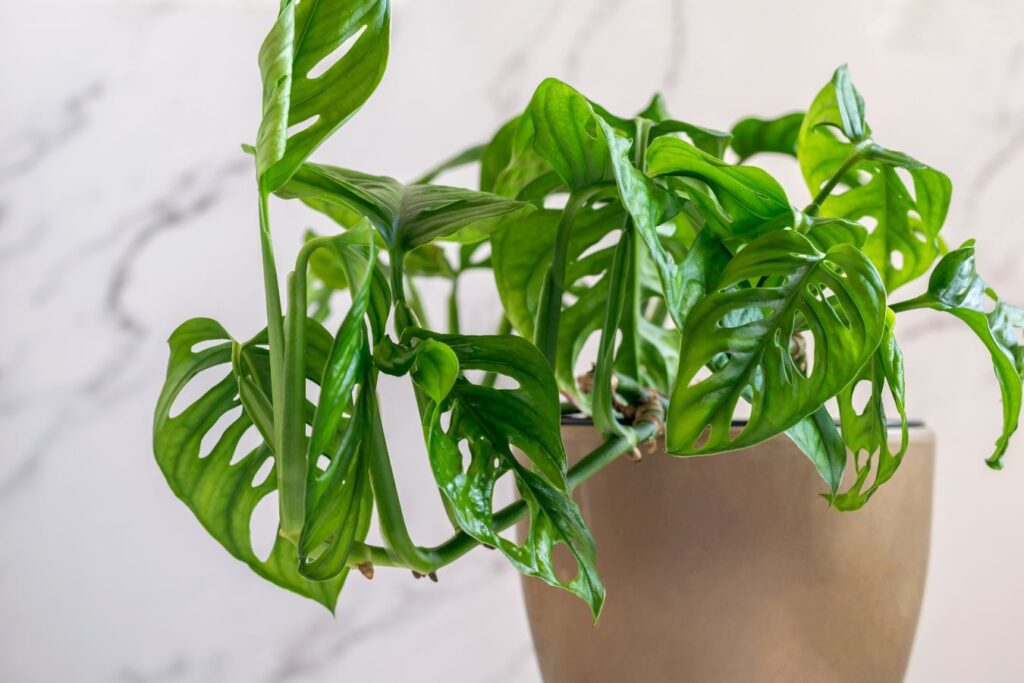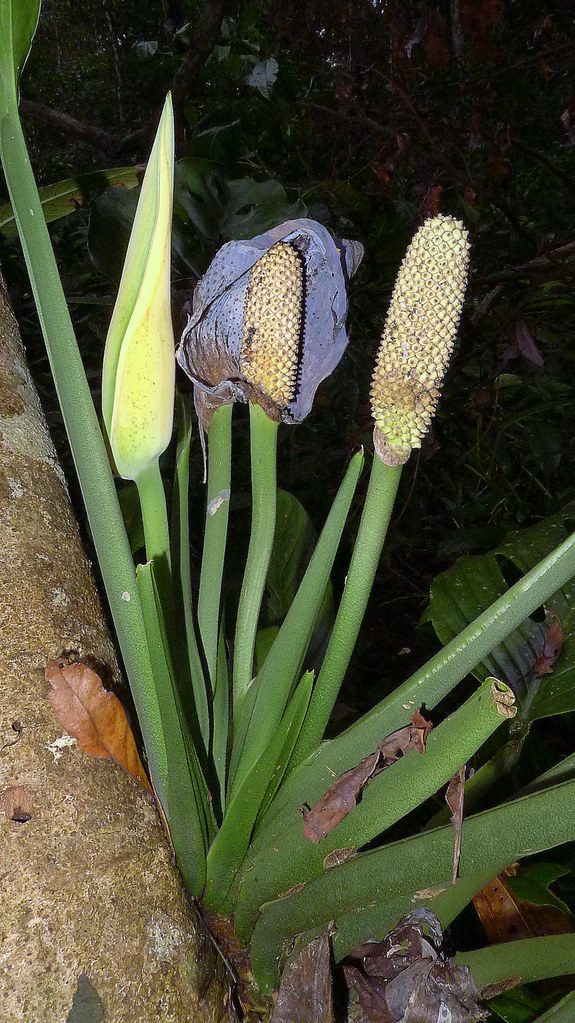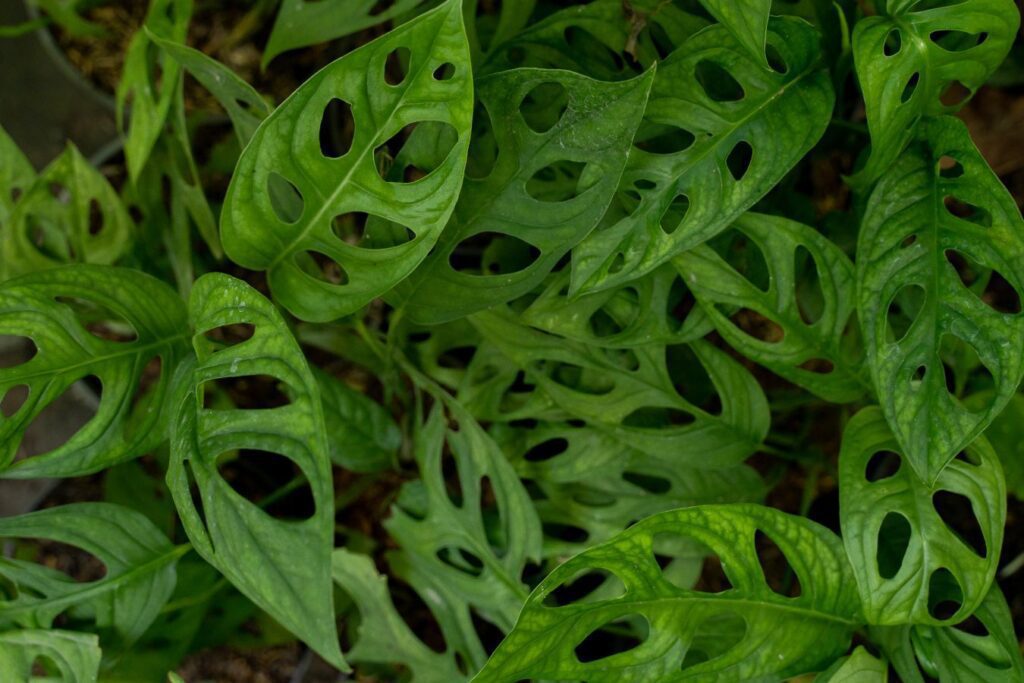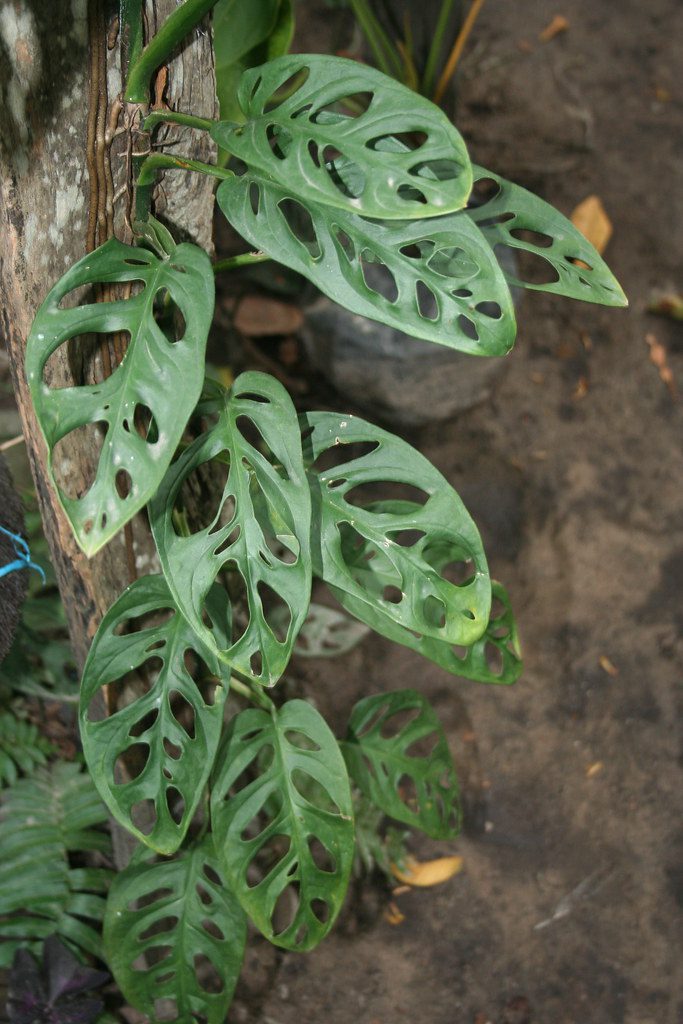
The Monstera adansonii is a tropical herbaceous climber of great ornamental value, owing to its glossy and perforated leaves, and it’s highly popular as an indoor plant. Its stem can behave as ascending, creeping, or hanging, depending on the conditions it has to grow in. From each node, it produces thick adventitious and aerial roots, which serve absorptive functions and help anchor the plant to various supports and substrates. The leaves vary in size, with an elliptical to cordiform shape, slightly thick and waxy texture, featuring large oval perforations. It differs from the M. deliciosa, which has both internal perforations and complete lateral splits.
The color of the Monstera adansonii leaves is bright green, and they can exhibit a wax-like texture, retaining their original shape. It’s also common to mistake it for the M. obliqua, which has proportionally larger perforations, although the latter is very rare in cultivation. The hypothesis for the usefulness of the holes in Monsteras is that they allow the passage of strong wind and rain, reducing damage during storms. Furthermore, it’s believed that these holes enable light to pass through, preventing the upper leaves from completely shading the lower ones.
The inflorescences of M. adansonii are of the spadix type, with tiny flowers densely arranged along a cylindrical rachis, accompanied by a white spath. The ripe fruit is reputed to be edible, emitting an aroma reminiscent of pineapple, similar to that of M. deliciosa. There are many varieties and cultivars of Monstera adansonii, some with larger leaves and more perforations, others more bushy, and some adapted to colder climates, even including variegated forms.

Whether climbing up sturdy supports or cascading from hanging baskets, Monstera adansonii has a spectacular effect. It’s no wonder it has become so popular in Urban Jungles, where it ranks among collectors’ favorites. While commonly used as a potted plant indoors, it can also be utilized in landscaping, fitting into various scenarios such as ground cover in shaded areas, suspended planters on balconies, vertical gardens, conservatories, and other situations that demand plants with strong tropical appeal, without requiring direct sunlight.
It should be cultivated in locations with abundant diffused light, avoiding direct sun exposure, for instance, near an east-facing window. It prefers fibrous substrates rich in organic matter, slightly acidic pH, and kept moist. A mix of two parts of ready-made anthurium or orchid mix combined with one part of potting mix for containers will work well.
Watering should occur whenever the substrate is superficially dry. Monstera adansonii is sensitive to waterlogging, so avoid leaving water in the saucer beneath the pot, allowing the substrate to drain freely. Brown and wilted leaves might signal waterlogging, indicating the need for action, such as repotting, changing the substrate, or removing the saucer. Learn more in the article: 8 Causes of Leaves with Dry and Burned Tips.

To obtain larger and more perforated leaves, it’s recommended, in addition to proper cultivation conditions, to provide support for upward growth. Plants with hanging or creeping stems tend to have smaller leaves. Gentle and organic fertilization is preferable to concentrated fertilization. Slow-release fertilizers also yield good results. Replanting every two years during spring enhances plant development. It doesn’t tolerate intense cold or frost, thriving best in temperatures above 20°C (68°F). It appreciates high relative humidity. To achieve this, mist the plant twice a day, in the morning and early afternoon, or use an electric humidifier.
Propagation can be done through seeds, but it’s easier through stem cuttings, which can be rooted in water or directly in substrate. Cut segments of the Monstera adansonii stem at the nodes, so that each new plant has a node to produce new leaves and roots.


